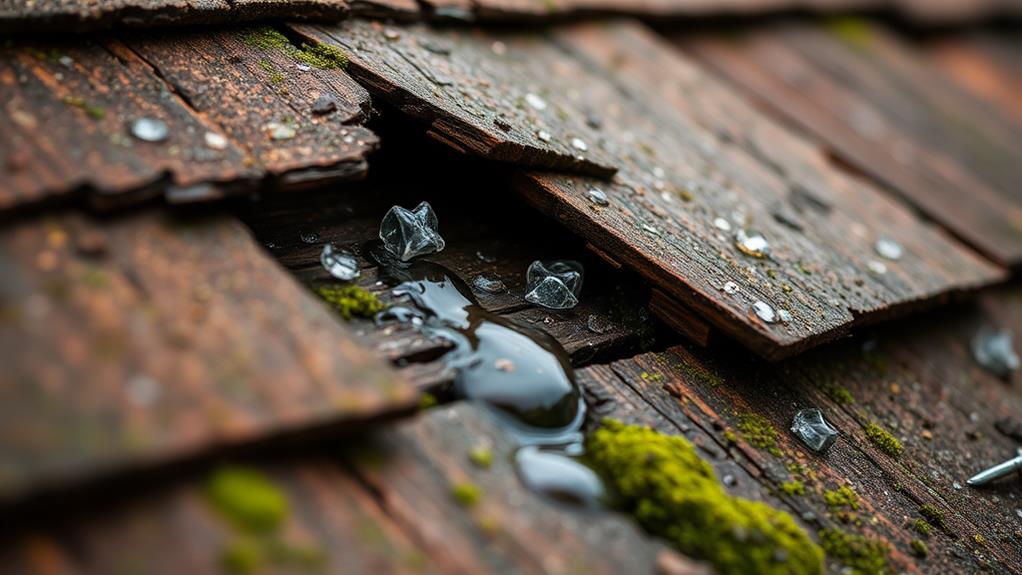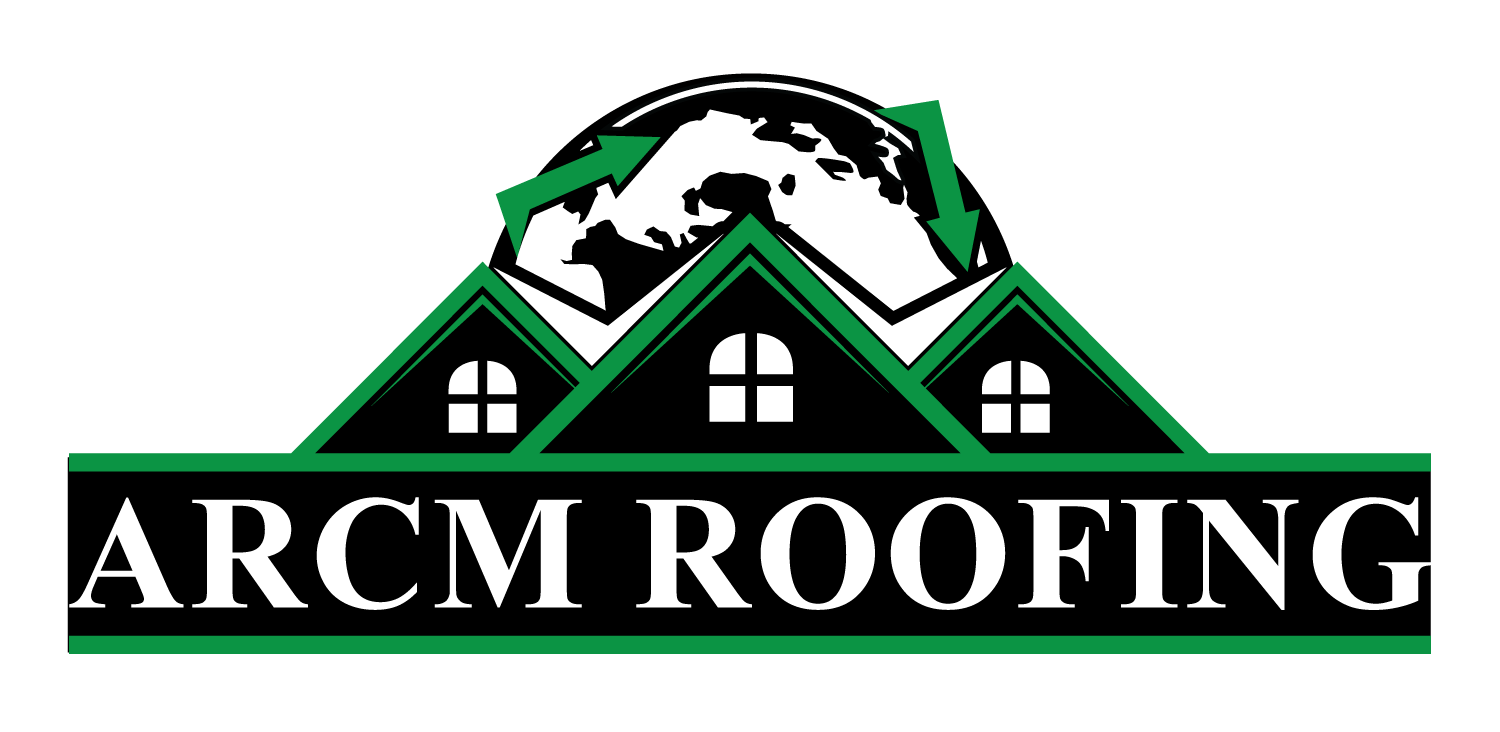Roof leak detection is essential for safeguarding homes against structural damage, mold, and interior deterioration. This process includes identifying water stains, examining attic insulation, and guaranteeing the integrity of roof flashing. Employing advanced technologies like infrared thermography and drone inspections aids in detecting leaks early, allowing for proactive maintenance that can avert emergency repairs and reduce costs. Comprehending common leak causes, such as damaged shingles and blocked gutters, is paramount in developing an effective prevention strategy. By engaging with expert roofing services, homeowners can guarantee the longevity and safety of their roofing systems, enhancing overall household security and maintenance.
Roofing Highlights
- Use infrared thermography for early leakage detection, preventing extensive damage.
- Engage professionals for comprehensive inspections of shingles, flashing, and other components.
- Regularly clean gutters and inspect for blockages to prevent water pooling and leaks.
- Identify and address water stains inside the home to prevent mold growth.
- Inspect attic insulation for signs of moisture damage using moisture meters.
Roof Leak Detection Involves

Effective roof leak detection encompasses a meticulous examination of several critical aspects of the roofing system. One must diligently identify water stains, which manifest as unmistakable indicators of potential leaks, possibly even traversing through the intricacies of attic insulation to assess any moisture absorption that could compromise thermal efficiency.
For quality roofing services in Littleton, reaching out to certified experts can prove invaluable. Additionally, inspecting the condition of roof flashing is essential, as any defects in these protective barrier points can exacerbate water penetration issues, necessitating prompt attention to prevent further structural damage.
Identifying Water Stains
Water stains are one of the most telltale signs of a roof leak and should be promptly identified to prevent further damage. These unsightly blemishes, often appearing on ceilings or walls, manifest as discolorations that may range in hue from yellowish-brown to darker tones, signifying moisture penetration. Identifying such water stains is indispensable in maintaining the structural integrity of your home, as delayed recognition can lead to more severe issues, including extensive water damage and the proliferation of mold.
To thoroughly inspect for these stains, homeowners should examine all interior surfaces, especially in areas prone to leaks such as attics, ceilings beneath roof valleys, and around skylights or chimneys. The size and shape of a water stain can vary; some may present as small, circular patches while others are elongated, resembling the path taken by water as it seeps through. Additionally, the texture of the affected surface might feel softer or damp to touch.
Engaging with a community of vigilant homeowners fosters an environment where such issues are shared and addressed collaboratively, emphasizing the value of proactive home maintenance. Detecting these early signs can ultimately protect your home and preserve its communal integrity.
Inspecting Attic Insulation
Inspecting attic insulation is an essential component in the process of detecting roof leaks, as it can reveal hidden signs of moisture intrusion. The insulation in attics serves not only as a barrier against heat loss but also as a key indicator of problems that might otherwise go unnoticed.
When examining attic insulation, one should look for irregularities such as discoloration, clumping, and degradation, which can often be indicative of water infiltration stemming from an underlying roof leak.
A thorough inspection involves evaluating the condition of the insulation along various points, particularly near the perimeter and around obstructions like vents and chimneys. Moisture presence can lead to deterioration, resulting in compromised insulation efficiency, fostering mold growth, and potentially leading to further structural damage if not addressed promptly. In addition to physical inspection, employing moisture meters can detect dampness levels not visible to the naked eye, offering a more detailed understanding of the situation.
For homeowners, understanding the significance of proper attic insulation inspection is crucial. Engaging in regular checks not only assures the integrity of one's roofing system but enhances the sense of security and belonging within a well-maintained home environment. Thorough knowledge of this process empowers individuals to act swiftly and confidently when potential issues arise.
Examining Roof Flashing
When endeavoring to detect roof leaks, examining roof flashing is a critical step in guaranteeing the integrity of your roofing system. Roof flashing, typically constructed from metal or plastic, serves as a barrier between roofs and adjoining structures, such as chimneys, vents, and skylights. Over time, flashing can become susceptible to damage due to weather exposure, physical wear, or improper installation. A thorough inspection of these areas is crucial, as even minor displacements or breaches can lead to considerable water ingress, ultimately compromising the interior of your home and fostering conditions ripe for mold growth.
In the quest for a secure home and peace of mind, understanding the diverse types of roof flashing—step flashing, continuous flashing, and counter flashing—provides homeowners with a knowledge base to support proactive maintenance. Correct application and sealing with appropriate adhesives and fasteners are essential to its effectiveness. Attention to these details, combined with regular inspections, can markedly extend the lifespan of your roof and prevent costly repairs.
Engaging with a professional roofing service will guarantee that flashing is properly inspected and maintained, fostering a sense of belonging through the preservation and care of your home's structural health.
Benefits

Roof leak detection offers several critical advantages for homeowners, primarily by preventing structural damage that can arise from unchecked water infiltration, which may compromise the integrity of the building. By partnering with experienced inspectors from local roofing companies, like those in Colorado, homeowners can receive a thorough assessment of their roofs.
This proactive approach not only helps in identifying issues early, thereby considerably decreasing the potential repair costs associated with extensive damage, but also enhances home safety by addressing moisture-related hazards such as mold growth. By investing in routine roof inspections and timely leak detection, homeowners can guarantee the longevity and safety of their property, protecting both their investment and their family.
Prevents Structural Damage
Among the significant benefits of roof leak detection is its role in preventing structural damage to a home. When undetected, roof leaks allow water to seep into the building's fundamental components, potentially leading to progressive deterioration. The comprehensive detection process guarantees these threats are identified early, with specialized technology pinpointing problematic areas before water can compromise the framework.
Constant exposure to moisture can weaken wooden beams, decay insulation, and foster mold growth, compromising both the integrity and safety of the dwelling.
Routine inspections, accordingly, serve as a safeguard, allowing homeowners to swiftly address leaks. By identifying issues before severe damage occurs, families preserve the longevity and safety of their homes, creating an environment of security and peace of mind.
Roof leak detection aligns with a proactive maintenance philosophy, emphasizing the importance of regular assessments to uphold the structural soundness of one's home.
Reduces Repair Costs
Proactive measures in roof leak detection can substantially reduce repair costs for homeowners. By identifying potential issues before they escalate into significant problems, homeowners can avoid the larger expenses associated with extensive roof repairs or replacements. Early detection enables the mitigation of damage to structural components such as rafters, beams, and ceilings, areas that when compromised can lead to costly restoration.
Engaging regular inspections and utilizing advanced detection technologies—like infrared thermography—can lead to substantial savings. These technologies allow for the precise identification of leaks even in their nascent stages, preventing water intrusion from affecting other sensitive areas within the home. A timely response not only curtails potential damage but also alleviates the financial burden typically exacerbated by delayed interventions.
Enhances Home Safety
A well-maintained roof plays a pivotal role in enhancing the overall safety of a home. Detecting roof leaks promptly is integral to maintaining the structural integrity and security of a residence. When leaks are identified early, homeowners can take immediate action to prevent potential hazards such as mold growth, electrical issues, and structural deterioration. These risks pose significant threats not only to the physical safety of a home but also to the well-being of its inhabitants.
Furthermore, the timely detection of roof leaks guarantees that emergency situations, often resulting in more complex interventions, are avoided. By proactively managing roof maintenance, homeowners foster a secure environment characterized by trust and confidence in their living spaces. A solid roof, free from leaks, fortifies the home against external elements, reinforcing its role as a sanctuary from the uncertainty of the outside world.
Roof leak detection services offer trained professionals who utilize expertise and advanced technology to pinpoint vulnerabilities in a home's roofing system. Their involvement underscores a community's shared value in safety, symbolizing a proactive stance towards maintaining the sanctity and security of homes. In embracing these services, individuals align themselves with a broader commitment to home safety and community well-being.
Common Causes of Roof Leaks

Understanding the common causes of roof leaks is essential for effective maintenance and prevention; these often stem from issues such as damaged shingles that can crack or warp over time, diminishing the roof's protective layer. Additionally, failures in flashing seals, which are intended to create waterproof barriers around roof features like chimneys and skylights, can also lead to leaks if not inspected regularly. Blocked gutters further exacerbate the problem by allowing water to pool and seep into the roof structure, highlighting the interconnected nature of roof components that requires careful attention.
| Cause | Description | Impact |
|---|---|---|
| Damaged Shingles | Shingles that are cracked or missing, reducing the roof's protection | Increased exposure to elements |
| Flashing Seal Failures | Compromised seals around chimneys or skylights causing water ingress | Potential internal damage |
| Gutter Blockage | Accumulation of debris in gutters, causing water overflow | Water seepage into roof structure |
Damaged Shingles Inspection
Roof shingles, the outermost layer of protection against weather elements, play a critical role in maintaining a home's integrity. In this manner, their condition is pivotal in preventing water intrusion that could compromise a comfortable and secure living environment. The inspection for damaged shingles is an essential component of roof leak detection, underscoring the importance of regularly surveying your roof's surface to identify any deteriorations or failures.
During an inspection, signs of shingle damage could include curling, cracking, or missing shingles. Such defects are often instigated by extreme weather conditions like hailstorms, strong winds, or prolonged exposure to intense sunlight. These conditions can lead to shingles becoming brittle or breaking, thereby creating opportunities for water penetration. Observing granule loss, a common indicator of aging shingles, can also signal the potential for future leaks.
To conduct a thorough inspection, homeowners should be attentive to anomalies such as discolored patches, which may hint at underlying moisture damage. For a sense of belonging and ensuring your home remains a safe haven, consider employing professional services for meticulous inspections. By engaging skilled roofers, households can enjoy peace of mind, knowing any shingle-related vulnerabilities are adequately addressed before exacerbating into significant leak issues.
Flashing Seal Failures
Flashing seal failures often present significant challenges in roof leak detection, as these failures can lead to water infiltration in otherwise secure roofing systems. Flashing is an indispensable component, typically made of metal or other durable material, used to direct water away from seams, joints, and vulnerable intersections on a roof. Installed around chimneys, vents, and skylights, flashing keeps the roof impermeable to moisture. However, the seals securing the flashing to the roof can degrade over time due to temperature fluctuations and ultraviolet exposure. As these seals weaken, gaps may form, unintentionally creating a pathway for water intrusion.
Identifying a flashing seal failure requires a thorough inspection, focusing on visible deformities or spaces where the sealant appears compromised. This is best performed by a professional who can meticulously assess the integrity of these seals. Upon detection, addressing flashing seal failures promptly is essential to prevent more extensive damage.
Fixing them often involves resealing or replacing the compromised sections using high-quality sealants and repair materials. Homeowners should be aware that routine maintenance checks, ideally scheduled every few years, serve as a proactive approach to safeguarding against such leaks, enhancing their roof's longevity and performance.
Gutter Blockage Issues
Water infiltration issues extend beyond flashing seal failures, with gutter blockage being another prevalent cause of roof leaks. Gutters serve as a fundamental component of a home's water management system, directing rainwater away from the roof and foundation.
When obstructions such as leaves, twigs, and debris accumulate, they impede the flow of water. This blockage causes water to overflow, potentially seeping under the roof's edges or pooling around the foundation, leading to considerable water damage and leaks within the home.
It's essential for homeowners to acknowledge the importance of regular gutter maintenance. Cleaning gutters involves more than just removing visible debris; it requires a thorough inspection to guarantee downspouts are clear and evaluating the system for any signs of wear or damage.
By maintaining clean and functional gutters, one can effectively mitigate the risk of roof leaks and protect the structural integrity of their home. In addition to routine cleaning, installing gutter guards can markedly reduce blockage risks. These guards act as a barrier, preventing debris from entering the system, and thus facilitating more efficient water drainage.
In essence, proactive gutter management can save homeowners from costly repairs and ensure peace of mind.
Connect With Us
Don't let a small leak turn into a big problem. Our expert team is ready to help you protect your home with reliable roof leak detection services.
Connect with us today for a thorough inspection and assurance. Call us now at (303) 306-8384 to schedule your appointment or get more information. Your home's safety is our priority, and we're here to guarantee it stays dry and secure. Call (303) 306-8384 now!
Roofing FAQ
How Can I Prevent Future Roof Leaks Effectively?
To effectively prevent future leaks, conduct regular inspections with a focus on maintaining drainage systems and sealing potential entry points. Proactive maintenance and immediate attention to minor issues foster a secure, reliable environment for your home.
What Tools Are Commonly Used in Roof Leak Detection?
Commonly used tools for leak detection include infrared cameras, moisture meters, and ultraviolet dye. These tools foster a systematic approach, ensuring accuracy and efficiency, consequently promoting a sense of community among professionals dedicated to high-quality workmanship.
Are There Advanced Technologies Available for Roof Leak Detection?
Advanced technologies, including infrared thermal imaging, drones, and electronic moisture meters, have revolutionized detection processes. These innovations offer precise localization of issues, fostering efficiency and accuracy, thereby building confidence within communities pursuing sustainable and resilient housing solutions.
Can Specific Roof Materials Impact Leak Detection Methods?
Absolutely, the roofing material considerably influences leak detection methods. Different materials, such as metal, tile, or asphalt, possess unique properties that require tailored approaches, ensuring accurate detection. Choosing appropriate methods fosters community trust and enhances homeowner assurance.
How Often Should Roof Inspections Be Conducted for Leak Prevention?
Regular inspections, ideally biannually, foster a resilient roof by ensuring early leak prevention. By collaborating with professionals, we protect our homes and investments, fostering a shared confidence in community standards of safety and maintenance.




